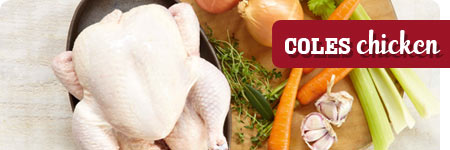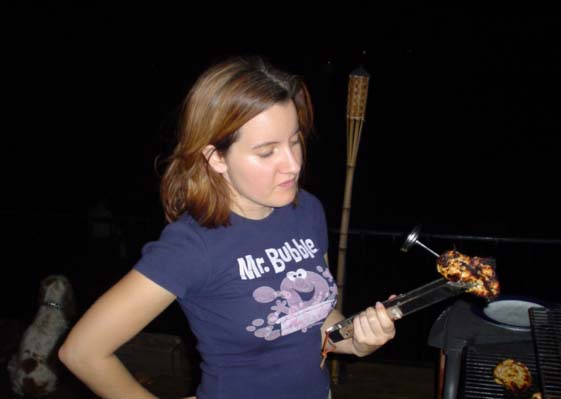 One of my caregivers shot this video of smoke rolling in over Mt. Coot-tha yesterday. Going to be another smokey day.
One of my caregivers shot this video of smoke rolling in over Mt. Coot-tha yesterday. Going to be another smokey day.
And look at these two living it up in Bordeaux on their way to Moubisson.
They look cold.

 One of my caregivers shot this video of smoke rolling in over Mt. Coot-tha yesterday. Going to be another smokey day.
One of my caregivers shot this video of smoke rolling in over Mt. Coot-tha yesterday. Going to be another smokey day.
And look at these two living it up in Bordeaux on their way to Moubisson.
They look cold.
I still can’t believe I get quoted on average once a day in the weirdest places.
 Guess we did some neat work over the years.
Guess we did some neat work over the years.
The introduction of a new technology, such as a human enhancement technology, may induce apprehension and concern among the general public. Social media enable individuals to find information and share their insights and concerns regarding new technologies. This results in an abundance of viewpoints that guides the individual’s acceptance and decision-making. A relevant question for this special issue is to what extent attitudes toward human enhancement technologies are influenced by online cues that signal the views of other people without obvious relevant expertise, such as online comments (social proof). An online experiment focusing on the enhancement of human health and the functioning of the human body through the application of nanotechnology in food was conducted. The study investigated to what extent social proof impacted views on the application of nanotechnology in food.
The valence of comments on a fake Facebook image with four comments was manipulated (positive, negative, mixed). A representative sample of Dutch Internet users (n = 289) completed the study. Perceptions, feelings, behavior, and information need were measured. Results showed that comment valence had a significant effect on risk perception, benefit perception and attitude: the more positive the comments read by the participants, the lower risk perception, the higher benefit perception and the more positive the attitude toward nanodesigned food. Significant interaction effects of initial feelings of dread and comment valence were further found for risk perception and willingness to buy. In contrast, there were no significant interactions of initial feelings of optimism and comment valence. Implications for risk communication regarding human enhancement technologies are discussed.
Risk and benefit perceptions of human enhancement technologies: The effects of Facebook comments on the acceptance of nanodesigned food
Human Behavior and Emerging Technologies
Margot Kuttschreuter and Femke Hilverda
DOI: 10.1002/hbe2.177
https://onlinelibrary.wiley.com/doi/pdf/10.1002/hbe2.177
Couple of good Brantford,Ontario (that’s in Canada) boys in The Band.
It’s a trifecta of citizenships for me and Sorenne – Canadian, American and now Australian — and a deux-fecta for Amy as we attended our citizenship ceremony on Saturday morning.
 We didn’t even know it was Australian Citizenship Day (a U.S. thing too, which is ironical because the three of us are also Americans), but there were 492 of us in a community centre — with another 500 of supporting friends and family, although we decided to keep ours a personal affair — who were welcomed to the Australian family.
We didn’t even know it was Australian Citizenship Day (a U.S. thing too, which is ironical because the three of us are also Americans), but there were 492 of us in a community centre — with another 500 of supporting friends and family, although we decided to keep ours a personal affair — who were welcomed to the Australian family.
Special thanks to Amy and Sorenne, and many others, who have stuck with me while I adjust to the next phase of our life.
We’ll be celebrating tomorrow, in sub-tropical Brisbane, by spending the day at the arena, playing and coaching ice hockey.
And many thanks for all the kind messages we received in response to our citizenships.
We are quite fortunate, and grateful.
dp
(before and after pics; are we different? that’s a softball question lobbed up there for your amusement)
The barfblog.com brain trust decided a few months ago to get rid of bites-l and centralize around barfblog.com.
American Independence Day seems apt, so welcome to dailybarf- l.
l.
Although it probably won’t be daily; the brain trust will figure it out as it goes.
Any immediate stuff will be on barfblog.com, twitter and facebook. When there’s enough stuff, a dailybarf will be distributed, along with additional items that were not blogged – dailybarf is like the daily digest with bonus tracks.
For those of you who signed-on-or-off for bites-l in the past month, sorry, you’ll probably have to do it again.
To sign up, go to barfblog.com and enter your e-mail in the receive newsletter box visible after scrolling down on the right side.
To unsubscribe, click the button at the bottom of dailybarf.

bites.ksu.edu and barfblog.com are complimentary and comprehensive resources for those interested in microbial food safety – the things that make people barf.
Too many people get sick each year from the food and water they consume. bites and barfblog are designed to inform and engage people in dialogue about food-related risks,  controls and benefits, from farm-to-fork.
controls and benefits, from farm-to-fork.
For rapid, relevant and reliable food safety news, subscribe to barfblog.com and follow us on twitter; for a daily, or twice-daily summary, including barfblog.com posts, subscribe to bites-l at bites.ksu.edu.
Dr. Doug Powell of Kansas State University, and associates, provide credible, current, evidence-based information on food safety and make it available through multiple media. Sources of food safety information include government regulatory agencies, international organizations such as the World Health Organization (WHO) and the Food and Agriculture Organization of the United Nations (FAO), peer-reviewed scientific publications, recognized experts in the field and other sources as appropriate.
barblog.com
barfblog.com is where Drs. Powell, Chapman, Hubbell and assorted food safety friends offer evidence-based opinions on current food safety issues. Opinions must be evidence-based — with references — reliable and relevant. The barfblog authors edit each other, often viciously.
Twitter and Facebook
Breaking food safety news items that eventually appear in bites or barfblog are often posted on Twitter and Facebook for faster public notification.
Infosheets
Food safety infosheets are designed to influence food handler practices by utilizing four attributes culled from education, behavioral science and communication literature:
• surprising and compelling messages;
• putting actions and their consequence in context;
• generating discussion within the target audiences’ environments; and
• using verbal narrative, or storytelling, as a message delivery device.
Food safety infosheets are based on stories about outbreaks of foodborne illness sourced from bites and barfblog and include the following: discussion of a foodborne  illness outbreak; discussion of background knowledge of a pathogen (including symptoms, etiology and transmission); food handler control practices; and emerging food safety issues. Food safety infosheets also contain evidence-based prescriptive information to prevent or mitigate foodborne illness related to food handling.
illness outbreak; discussion of background knowledge of a pathogen (including symptoms, etiology and transmission); food handler control practices; and emerging food safety issues. Food safety infosheets also contain evidence-based prescriptive information to prevent or mitigate foodborne illness related to food handling.
bites-l listserv
The bites.ksu.edu listserv is a web-based mailing list that provides information about current and emerging food safety issues, gathered from journalistic and scientific sources around the world and condensed into short items or stories that make up the daily postings. The listserv has been issued continuously since 1993 and is distributed daily via e-mail to thousands of individuals worldwide in academia, industry, government, the farm community, journalists and the public at large.
The listserv is designed to:
• convey timely and current information for direction of research, diagnostic or investigative activities;
• identify food risk trends and issues for risk management and communication activities; and
• promote awareness of public concerns in scientific and regulatory circles.
The bites listserv functions as a food safety news aggregator, summarizing available information that can be can be useful for risk managers in proactively anticipating trends and reactively address issues. The bites editor, Dr. Powell, does not say whether a story is right or wrong or somewhere in between, but rather that a story is available today for public discussion; barfblog is where contributors express their evidence-based opinions on food safety issues.
Research
Researchers associated with bites and barfblog conduct an array of food safety research, including:
• effectiveness of food safety messages and media in public discussions of food safety issues, such as the risks of listeria to pregnant women, legislation related to raw milk, public availability of restaurant inspection data, and the safety of fresh produce, are evaluated through qualitative and quantitative methods;
• observational research methodologies are used to quantify individual food safety behaviors from farm-to-fork, to enhance handwashing compliance, thermometer use, food packaging information and interventions that can reduce the number of people that get sick from the food and water they consume; and,
• evaluation of food safety policy and alternatives.
Teaching
• A graduate program in food safety risk analysis – including food safety, language, culture and policy — is being developed and will include distance-education.
• Courses are currently taught in food safety risk analysis, and food safety reporting.
Information
• Dr. Powell is the publisher and editor of bites and barfblog. Dr. Ben Chapman of North Carolina State University is the assistant editor.
• bites and barfblog are produced by a diverse team of secondary, undergraduate and graduate students as well as professionals who create multilingual and multicultural food safety and security information, including weekly food safety information sheets, and multimedia resources.
• Research, educational and journalistic opportunities are available for secondary, undergraduate and graduate students through bites.ksu.edu and barfblog.com.
Dr. Powell, a professor of food safety at Kansas State University, is the author of 42 peer-reviewed journal articles, 10 peer-reviewed book chapters and 1 peer-reviewed .jpg) book. His cv is available at http://bites.ksu.edu/powell_cv.
book. His cv is available at http://bites.ksu.edu/powell_cv.
Links
bites and barfblog may include links to other sites, which are provided as a convenience and as an additional access to the information contained therein. bites and barfblog are not responsible for the content of any other sites or any products or services that may be offered through other sites.
Accuracy, Completeness and Timeliness of Information on the Site
The bites and barfblog folks strive to provide accurate, complete and current information. The materials on this site are provided for general information only, and any reliance upon the material found on this site will be at your own risk. We reserve the right to modify the contents of the site at any time.
For more information, please contact us.
People often ask me, “Doug, how do you choose the information that goes in bites.ksu.edu? Do you have a basis for any of your food safety rants on barfblog? Why are you such a jerk?
People often ask Ben, “Why do you write so much about vomit?”
 People often ask Amy, “Why are you with Doug?”
People often ask Amy, “Why are you with Doug?”
When we ran the food safety information centre back in Canada, we had detailed procedures for how to answer questions, what information was provided and why. We don’t answer questions so much anymore, but we do provide a lot of information so I figured we better clearly understand what we do and why. This is more for us and all the students that come through my lab than it is for you. Really, it’s me, not you.
bites.ksu.edu is a unique comprehensive resource for all those with a personal or professional interest in food safety. Dr. Powell of Kansas State University, and associates, search out credible, current, evidence-based information on food safety and make it accessible to domestic and international audiences through multiple media. Sources of food safety information include government regulatory agencies, international organizations such as the World Health Organization (WHO) and the Food and Agriculture Organization of the United Nations (FAO), peer-reviewed scientific publications, academia, recognized experts in the field and other sources as appropriate.
Throughout all bites activities, the emphasis is on engaging people in dialogue about food-related risks, controls and benefits, from farm-to-fork. bites strives to provide reliable, relevant information in culturally and linguistically appropriate formats to assist people in identifying, understanding and mitigating the causes of foodborne illness.
bites LISTSERV
The bites.ksu.edu listserv is a free web-based mailing list where information about current and emerging food safety issues is provided, gathered from journalistic and scientific sources around the world and condensed into short items or stories that make up the daily postings. The listserv has been issued continuously since 1995 and is distributed daily via e-mail to thousands of individuals worldwide from academia, industry, government, the farm community, journalists and the public at large.
 The listserv is designed to:
The listserv is designed to:
• convey timely and current information for direction of research, diagnostic or investigative activities;
• identify food risk trends and issues for risk management and communication activities; and
• promote awareness of public concerns in scientific and regulatory circles.
The bites listserv functions as a food safety news aggregator, summarizing available information that can be can be useful for risk managers in proactively anticipating trends and reactively address issues. The bites editor, Dr. Powell, does not say whether a story is right or wrong or somewhere in between, but rather that a specific story is available today for public discussion.
barfblog.com is where Drs. Powell, Chapman, Hubbell and assorted food safety friends offer evidence-based opinions on current food safety issues. Opinions must be evidence-based – with references – reliable, rapid and relevant. The barfblog authors edit each other – viciously.
 TWITTER
TWITTER
Breaking food safety news items that eventually appear in bites or barfblog are often posted on Twitter for faster public notification.
INFOSHEETS
Food safety infosheets are designed to influence food handler practices by utilizing four attributes culled from education, behavioral science and communication literature:
• surprising and compelling messages;
• putting actions and their consequence in context;
• generating discussion within the target audiences’ environments; and
• using verbal narrative, or storytelling, as a message delivery device.
Food safety infosheets are based on stories about outbreaks of foodborne illness sourced from the bites listserv. Four criteria are used to select the story: discussion of a foodborne illness outbreak; discussion of background knowledge of a pathogen (including symptoms, etiology and transmission); food handler control practices; and emerging food safety issues. Food safety infosheets also contain evidence-based prescriptive information to prevent or mitigate foodborne illness related to food handling. And now, available in French, Spanish and Portuguese.
bites bistro videos
A nod to the youtube generation, but we don’t really know what we’re doing.
Salut! I’m Amy, a French professor gone food safety geek. I love to learn about food safety practices in different cultures, and watch how they play out on reality TV. No wonder why Doug’s converting our kitchen into the Safe Food Café. Although I’m more known for my blog posts on lait cru (raw milk) camembert and doggy dining, I write on exile and nostalgia in French autobiography for a living.
 Ne mangez pas de caca, et donnez ce que vous pouvez pour soutenir l’iFSN.
Ne mangez pas de caca, et donnez ce que vous pouvez pour soutenir l’iFSN.
(translation: don’t eat poop, and give what you can to support iFSN)